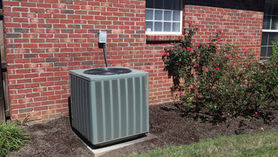

Jul 22, 20215 min read


May 14, 20212 min read


May 14, 20212 min read


May 14, 20212 min read


May 12, 20211 min read


May 11, 20213 min read


May 11, 20212 min read


May 11, 20213 min read


May 9, 20218 min read


May 6, 20214 min read
OPTIONAL WATERPROOFING:
At this stage, some people choose to waterproof the backside of the wall. This is done to prevent future water infiltration, but if the wall is completely exposed to the weather and in an exterior area, it may not matter to you.
Keep in mind that a bit of humidity always goes through concrete, and when evaporates, it creates an undesirable salt, that makes paint bubble and creates water marks on the exposed side of walls.

One step cannot be skipped, a french drain in this case.
But you may go with other pre-specified drainage system, designed to protect the wall against the forces of water accumulating on the high side of the wall.
Retaining walls collapse for many reasons, but the most common reason is the hydrostatic pressure on the high side of the wall; therefore, a drainage system is paramount.
The most used drainage system is the tried and true — French Drain.
This system is composed of underground pipes, that are covered by fabric and gravel, which allows water to penetrate inside these pipes, and flow safely to a discharge area.
We will have a list of most common materials for an efficient drainage system, that you can download for free from our website, you can find a link at the description below.

Superficial drainage is important, because you catch the bulk of water, before it even enters behind your wall.

It prevents a lot of trouble, and if you keep it clean of debris, it will make your wall last much longer, a few generations I’d say.
Before we go on, these are the sponsors that paid to have this video made specially for you.
They build these walls and they refer their clients to watch this video to understand what they are getting into, so everyone wins in the end.






























Comments